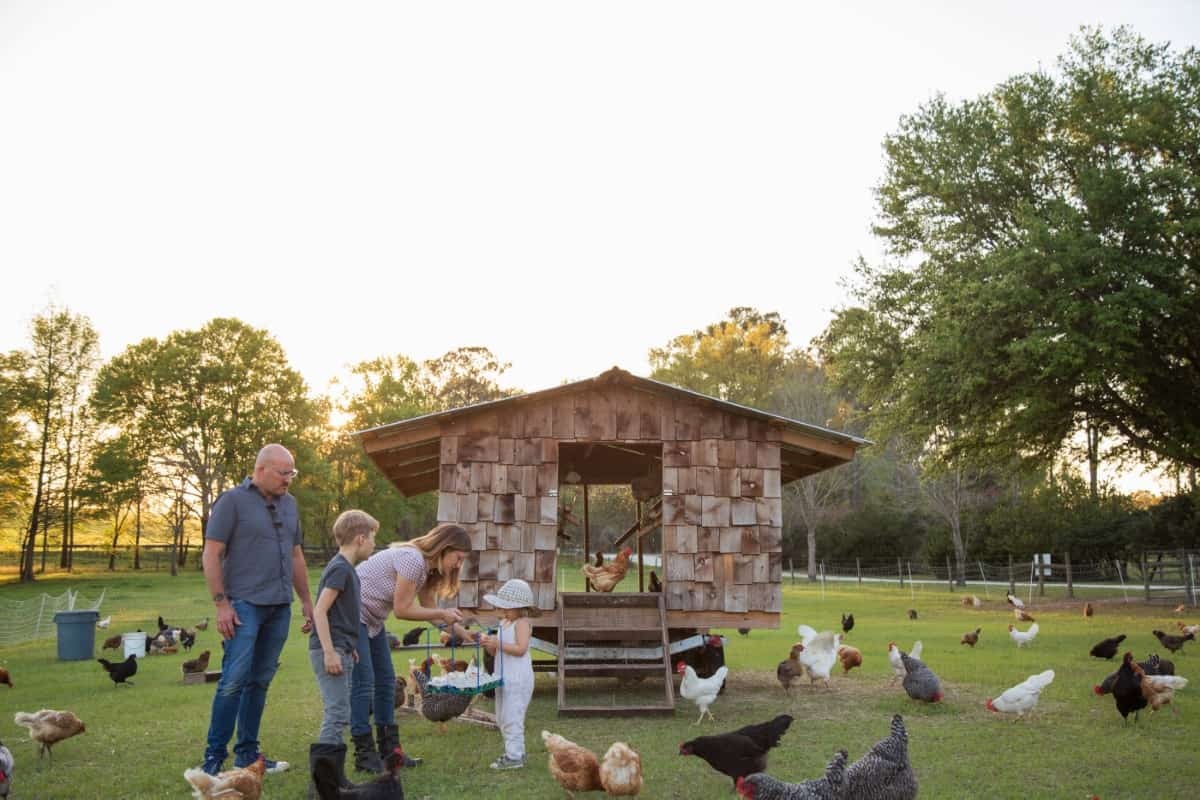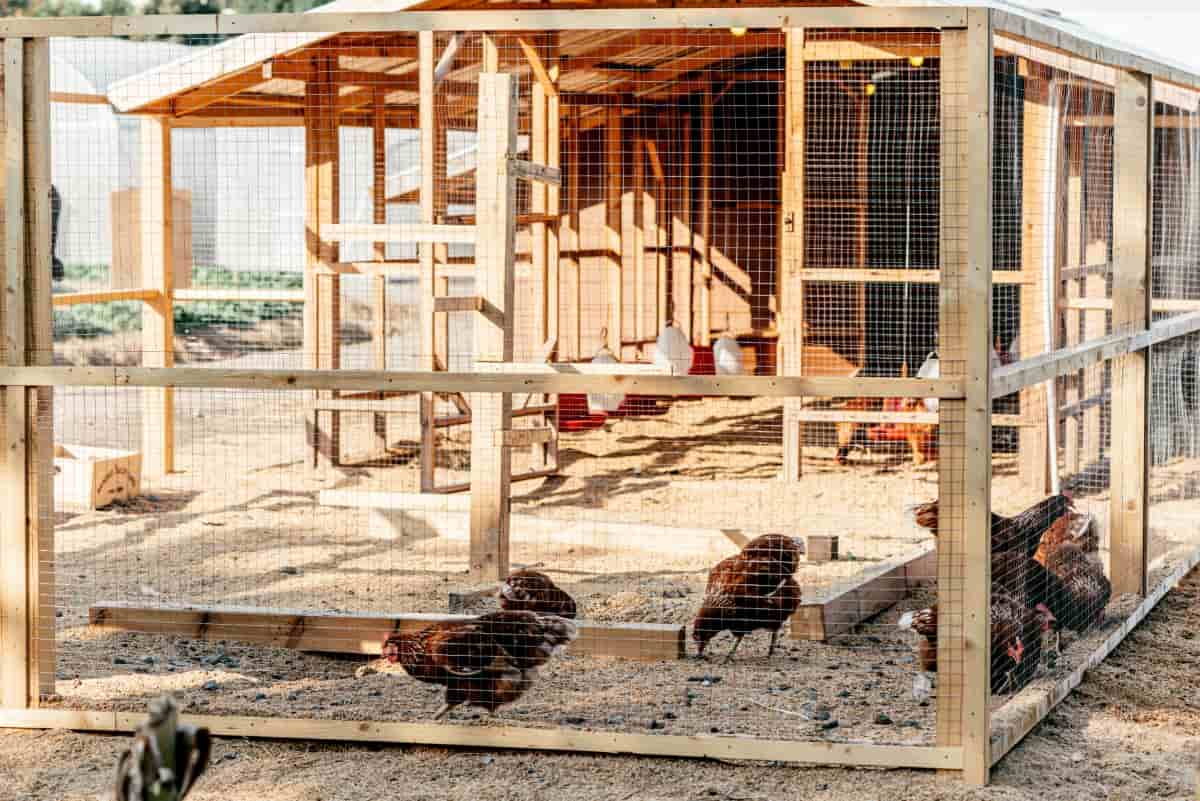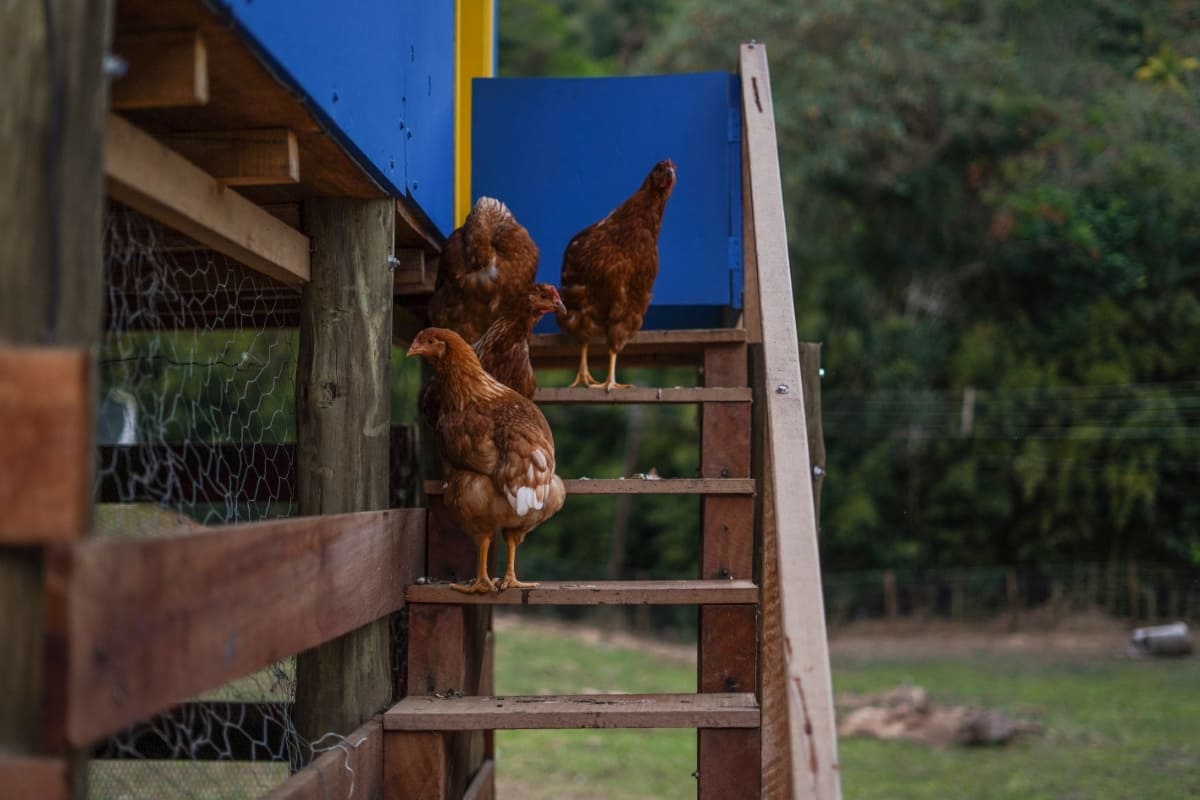A chicken coop roof helps to maintain the optimal temperature inside the coop, ensuring that your chickens are comfortable throughout the year. The right chicken coop roof not only protects your feathered friends from the elements but also adds charm to your backyard. Several creative and practical DIY chicken coop roof ideas will not only protect your flock but also add charm and functionality to your outdoor space.

DIY Chicken Coop Roof Ideas
Overview of DIY Chicken Coop Roofs
Understanding Roofing Needs for Chicken Coops
Creating a DIY chicken coop roof is essential for providing your feathered friends with shelter and protection. Understanding the roofing needs of chicken coops is crucial to ensure their safety and well-being. When designing a coop roof, consider factors like insulation, ventilation, and durability. The type of roof will depend on climate, budget, and personal preferences.
Benefits of a Well-Designed Coop Roof
A well-designed coop roof offers various benefits for your backyard chickens. It protects from the elements, keeping your feathered friends safe and comfortable in all weather conditions. Moreover, a well-constructed roof keeps predators at bay, giving you peace of mind knowing that your chickens are secure.
Green Roof: Sustainable and Insulating
Steps to Create a Living Roof for Your Coop
A green roof not only adds an aesthetic touch to your backyard but also provides insulation and helps regulate the temperature inside the coop. Creating a living roof for your coop is easier than you think. Start by selecting hardy, low-maintenance plants that can thrive in the rooftop environment.
Ensure proper drainage by adding a gravel layer or lightweight soil mix before planting. Watering is key to keeping your green roof healthy. Regularly check for any signs of overgrowth or pest infestations. Trim back plants as needed and remove any debris to prevent clogging of drains.
Selecting Plants for a Green Coop Roof
When it comes to creating a green coop roof, selecting the right plants is key. Not all plants thrive in rooftop environments, so choose ones that are hardy and low-maintenance. Succulents like sedum and sempervivum are excellent choices as they require minimal water and can withstand varying weather conditions. Consider planting herbs like thyme or rosemary – you’ll have fresh herbs for cooking while adding greenery to your coop roof. Ornamental grasses can add texture to the landscape.
Gabled Roof: Classic and Spacious
Designing a Gabled Roof for Easy Rainwater Runoff
Designing a gabled roof involves creating two sloping sides that encounter a ridge in the middle, allowing rainwater to easily runoff. This ensures proper drainage during rainy seasons, keeping your coop dry and cozy. The steep slopes of a gabled roof prevent water from pooling on top, reducing the risk of leaks or structural damage over time.
Materials and Construction Tips for a Gabled Roof
Opt for durable and weather-resistant options like metal or asphalt shingles to ensure longevity. Consider the pitch of the roof carefully to allow for proper rainwater runoff and prevent water pooling. Ensure that you have a sturdy framework in place to support the weight of the gabled roof. Use quality lumber and hardware to create a stable structure that can withstand several weather conditions.
Flat Roof: Simple and Functional
Advantages of a Flat Roof for Urban Coops
When it comes to chicken coop roofing, a flat roof offers simplicity and functionality, making it an excellent choice for urban settings. The advantages of a flat roof for urban coops include easy maintenance, space efficiency, and cost-effectiveness. For smaller backyard spaces or urban settings, a flat roof can be a practical and space-saving option for a chicken coop.
How to Ensure Proper Drainage on a Flat Roof
Proper drainage is crucial for a flat roof to prevent potential structural damage. To ensure adequate drainage on a flat roof, install sloping or use materials designed for water runoff. Regularly inspect the roof for debris or blockages that could impede drainage flow. Consider adding a slight slope to the roof surface towards these drainage systems to enhance water flow further.
In case you missed it: Sand Bedding for Chickens: Ultimate Guide to Using Sand in Your Chicken Coop

Skylight Roof: Natural Lighting
Incorporating Skylights for Enhanced Sunlight
Consider incorporating a skylight roof for enhanced sunlight throughout the day. Skylights not only provide ample sunshine but also create a cheerful and airy environment for your feathered friends. With proper installation and maintenance, a skylight roof can improve the overall well-being of your flock by providing them with a sunny and inviting space to roost and lay eggs.
Choosing Durable Skylight Materials
When choosing durable skylight materials, opt for high-quality options that can withstand varying weather conditions. Polycarbonate or tempered glass are excellent choices as they are both sturdy and long-lasting, ensuring the safety of your chickens while allowing sunlight to filter through effectively.
Recycled Materials Roof: Eco-Friendly Options
Using Recycled Materials for Your Coop Roof
When it comes to creating a sustainable and eco-friendly chicken coop roof, using recycled materials is a fantastic option. Not only does it help reduce waste, but it also adds a unique touch to your coop.
Creative Ideas for Recycled Roofing
Get creative with your recycled roofing by repurposing old tin cans, reclaimed wood, or even discarded metal sheets. Each material can bring its charm and character to your coop while being environmentally conscious. You can also explore using reclaimed plastic bottles or tires as innovative roofing solutions that are both resourceful and visually appealing.
Metal Roof: Durable and Predator-Proof
Benefits of Metal Roofing for Chicken Coops
Metal roofs are a popular choice for chicken coops due to their durability and predator-proof qualities. These robust roofs provide long-lasting protection against the elements and potential threats from predators like raccoons or birds of prey. Regular maintenance will help extend the metal roof’s lifespan.
Installation Tips for a Metal Coop Roof
When installing a metal roof on your chicken coop, ensure it is securely fastened to prevent any gaps where intruders could enter. Opt for high-quality materials that can withstand extreme weather conditions and resist corrosion over time. Consider adding extra insulation underneath the metal roofing to regulate temperature fluctuations inside the coop, keeping your feathered friends comfortable year-round.
Polycarbonate Roof: Light and Weather-Resistant
Advantages of Polycarbonate Roofing
When it comes to chicken coop roofing options, polycarbonate roofs stand out for their lightness and durability. The key advantage of using polycarbonate roofing for chicken coops is its ability to withstand harsh weather conditions without losing its structural integrity. It offers UV protection, preventing discoloration and degradation over time.
Guidelines for Installing a Polycarbonate Roof
Installing a polycarbonate roof requires careful consideration of factors like slope, drainage, and support structure. By choosing polycarbonate roofing for your chicken coop, you’re investing in a long-lasting solution that requires minimal maintenance. Its lightweight nature makes it easy to handle during installation while still offering robust protection against rain, wind, and sunlight.
In case you missed it: Pros and Cons of Having a Rooster in a Flock and Coop

Thatched Roof: Rustic and Charming
Crafting a Thatched Roof for Aesthetic Appeal
When it comes to adding a touch of rustic charm to your backyard chicken coop, a thatched roof is a perfect choice. Crafted from natural materials like straw, a thatched roof can give your coop a quaint and cozy look that blends seamlessly with the surroundings. Make sure to follow proper installation and regularly inspect and replace any damaged thatch to keep your chicken coop roof in top condition.
Maintenance Tips for a Thatched Coop Roof
To create a thatched roof for your chicken coop, start by layering bundles of dried straw or reeds in an overlapping pattern. Secure the thatch with nails or twine to ensure it stays put even during windy days. Maintenance tips for a thatched coop roof include keeping an eye out for pests like birds or rodents who may be attracted to the natural materials.
Solar Panel Roof: Energy-Efficient Solutions
Integrating Solar Panels for Sustainable Energy
Solar panel roofs offer an eco-friendly solution that benefits both your chickens and the environment. By integrating solar panels onto your coop roof, you can reduce electricity costs while reducing your carbon footprint. However, proper planning and installation are essential for a successful solar panel roof.
Planning and Installing a Solar Panel Roof
For installing solar panels on a chicken coop, consider factors such as sunlight exposure, panel orientation, and wiring needs. Proper installation is key to maximizing energy efficiency and ensuring long-term savings. Solar panel roofs are a smart investment that pays off in the long run. With proper installation, a solar panel roof can be a smart and eco-friendly addition to your chicken coop.
In case you missed it: Chicken Coop Deep Littering: How to Use it and Benefits

Conclusion
A chicken coop roof is a crucial component of any backyard poultry setup. For designing a chicken coop for your backyard, the roof plays a main role in providing protection and shelter for your feathered friends. Various creative and practical DIY chicken coop roof ideas can suit every backyard setting.
- Feed Your Flock for Less: Top 10 Tips to Save on Chicken Feed
- Ultimate Guide to Ossabaw Island Hog: Breeding, Raising, Diet, and Care
- Hatching Answers: The Top 10 Reasons Your Chickens Aren’t Laying Eggs
- Eggs and Economics: Breaking Down the Cost of Raising Backyard Chickens
- Defend Your Greens: Proven Methods to Keep Iguanas Out of Your Garden
- Ultimate Guide to Cinnamon Queen Chicken: A Comprehensive Guide for Beginners
- Ultimate Guide to California Tan Chicken: Breeding, Raising, Diet, Egg-Production and Care
- Ultimate Guide to Marsh Daisy Chicken: Breeding, Raising, Diet, and Care
- 10 Types of Chicken Farming Businesses You Can Start for Profits